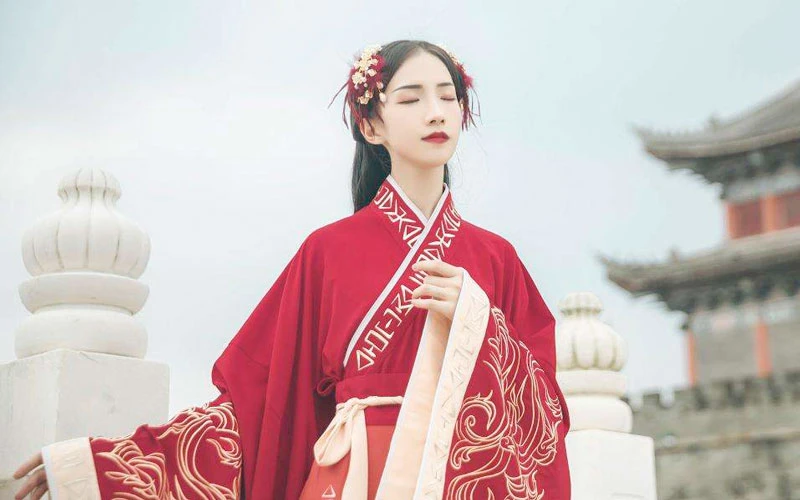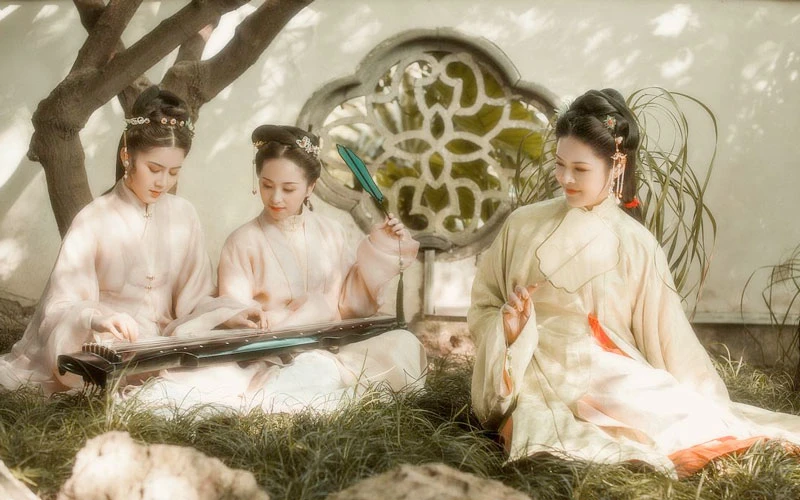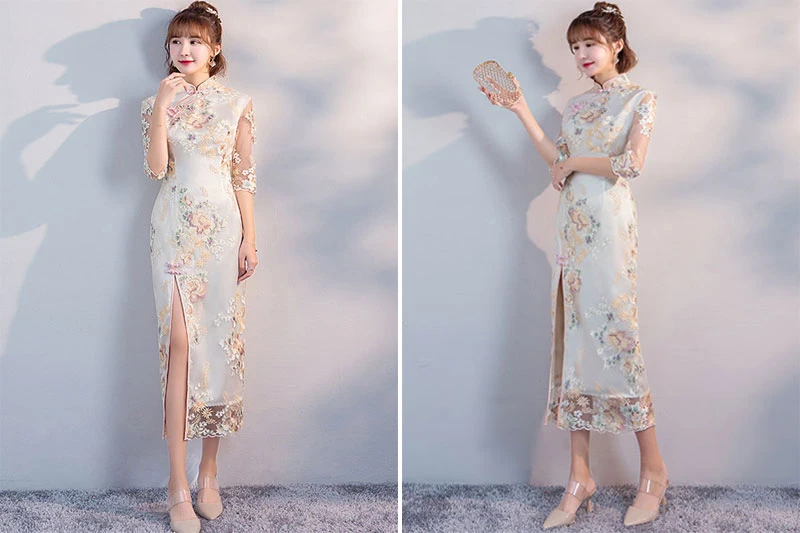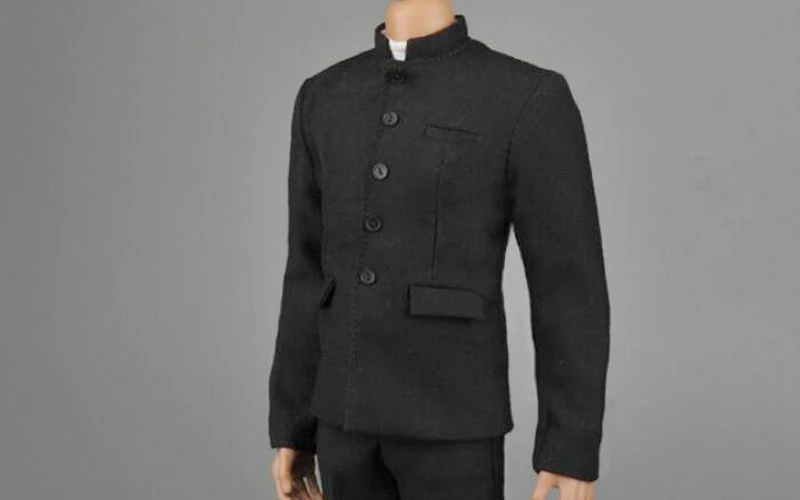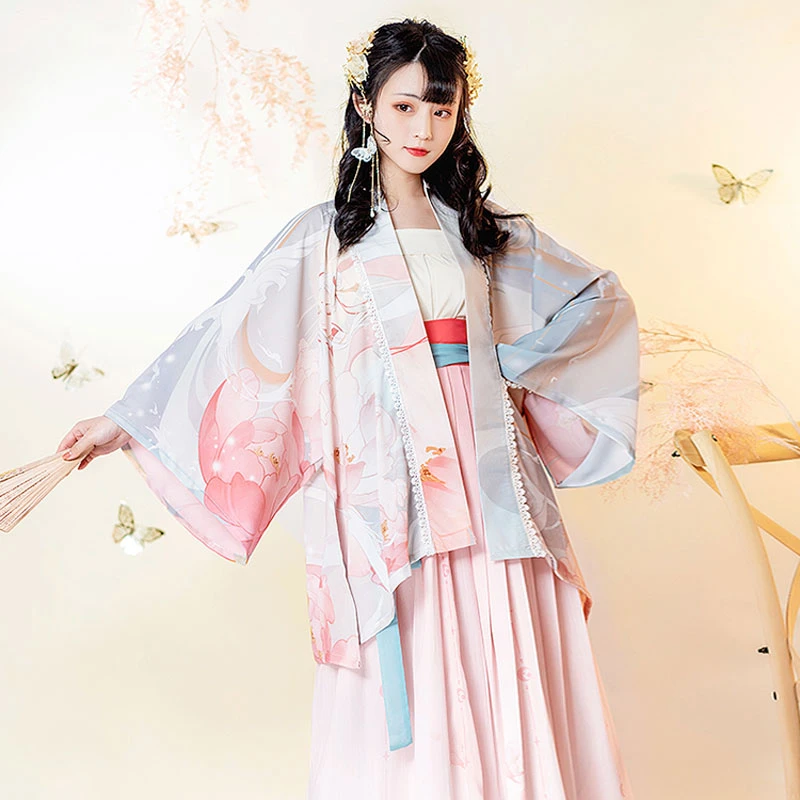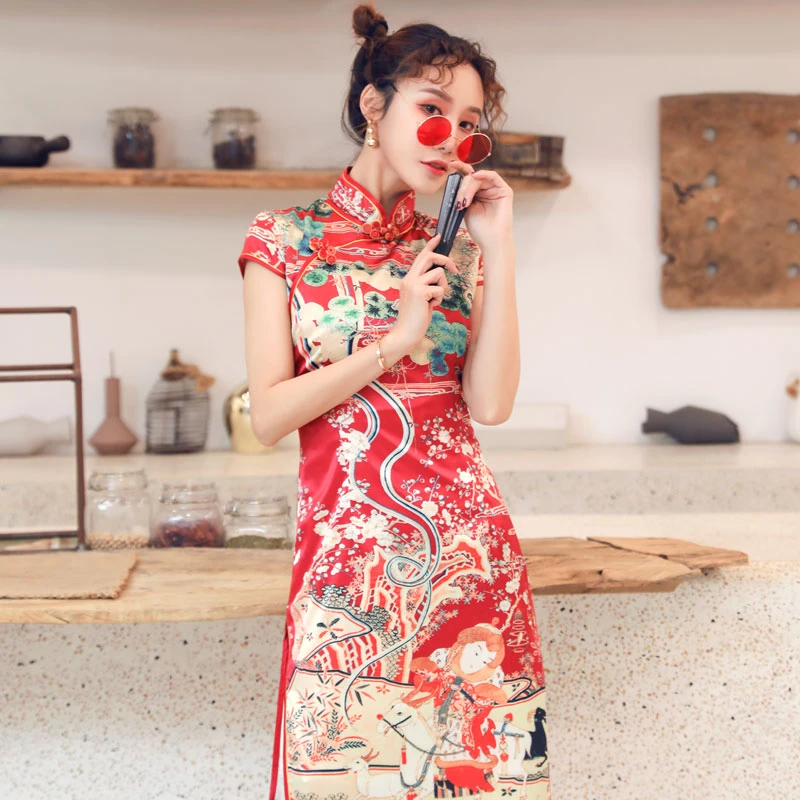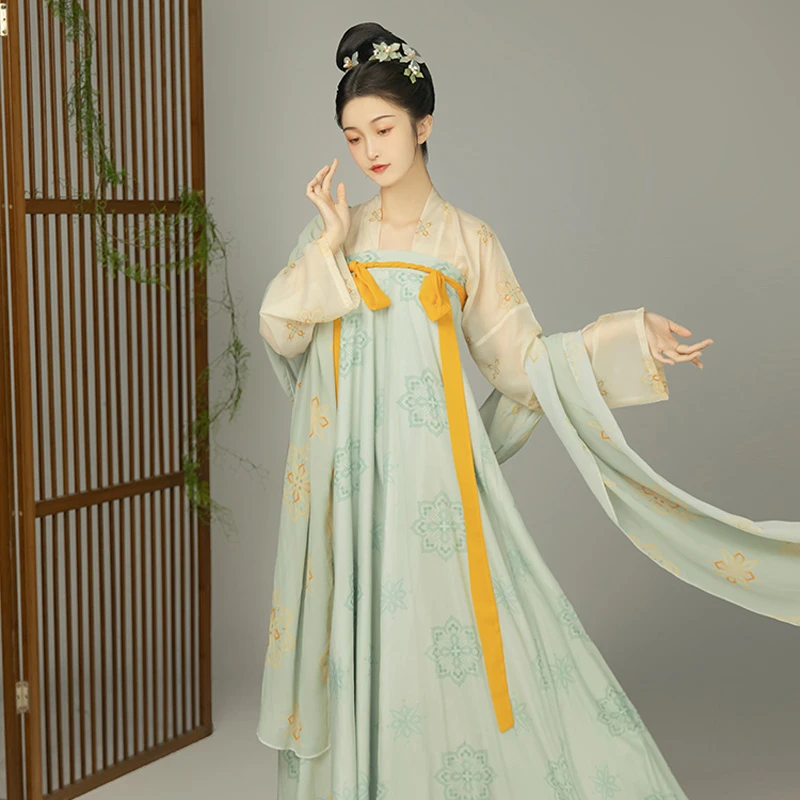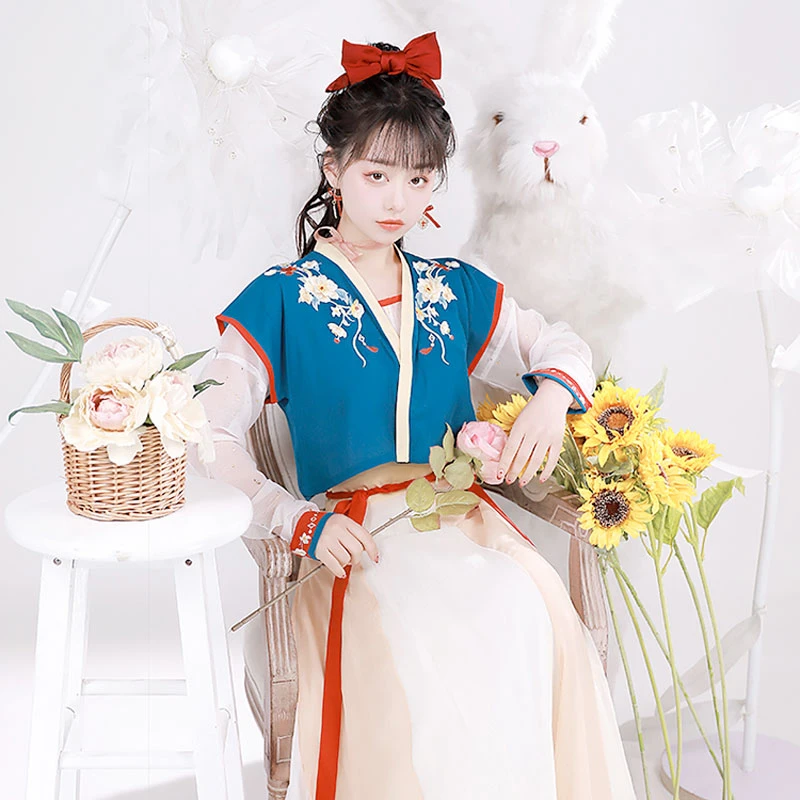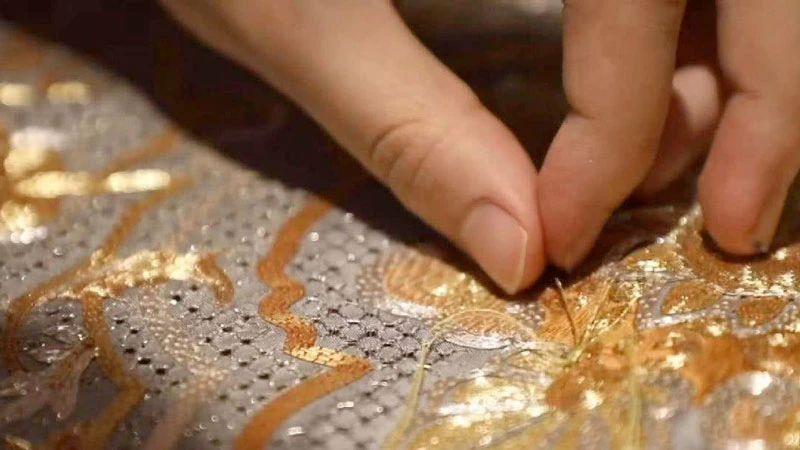If you are imagining traditional Chinese attire, what comes to mind? In this article, we will discuss the many clothing styles that have emerged throughout China’s historical dynasties, the ethnic minority groups’ traditional attire, and the current function of traditional Chinese dresses and clothing.
The history of China is well-known for its many dynasties, each different and significant in its own way. Every country all over the globe has its distinct traditional clothes. However, there are a few individuals who have had a significant impact on the evolution of traditional Chinese dresses. There are 4 famous traditional Chinese dresses.
- Hanfu Dress
- Qipao Cheongsam Dress
- Tang Suit
- Zhongshan Zhuang
1. Hanfu Dress
Traditional Chinese Dress Hanfu was invented in Han Dynasty. The dynasty of Han was China’s second regal era and was extremely rich. It is frequently perceived as one of China’s most impressive and significant dynasties. Still nowadays, most people associate the Chinese with the Han people. Because the Han is China’s major ethnic group,
The Character of the Chinese is referred to as Han characters. Similarly, the Mandarin language is referred to as Han (hàny), and traditional Chinese dress is referred to as Han (hànf). During the period of Han, men’s and women’s clothing patterns and fashions were almost similar. Different colors, textiles, and decorations were utilized to differentiate the genders. This period was characterized by its “dark style,” which favored black and crimson materials.
It is characterized by broad arms and a layered style, with outfits commonly including two or three garments, generally, a long wrap skirt, and an open cross-collar robe worn as an outer outfit and wrapped around the abdomen. Quju (curved hems) and Zhiju (straight hems) were the two types of garments in use. Women may also wear ruqun – a cross-collar wrap shirt with a long skirt – in addition to their usual attire.
2. Qipao Cheongsam Dress
The Cheongsam originated with the Manchus, who descended from ancient Nuzhen tribes. Nurhachi, a renowned political and military strategist in the early 17th century, combined the numerous Nuzhen tribes and established the Eight Banners System. Over time, a collarless, tube-shaped gown became popular for both men and women. That is the Qipao’s embryo. The outfit is referred to in Chinese as Qipao, which translates as “banner gown,” since it originated among those who lived under the Banner System.
During the Qing Dynasty, the cheongsam gained popularity among females of the royal family. Cheongsams were fitting freely and were long enough to reach the insteps at the time. They were often made of silk, and the whole gown was embroidered, with thick lace trimming the neck, sleeves, and borders.
The Cheongsam, or Qipao, is a traditional Chinese women’s clothing that blends the exquisite beauty of Chinese history with distinctive stylistic aspects. Cheongsam with a high neck and closed collar has a loose chest, asymmetrical closing, fitting waist, and side slits. According to devotees, the cheongsam symbolizes a woman’s modesty, gentleness, and attractiveness. Designed to highlight the feminine form’s natural delicacy, it also offers the appearance of long, thin legs. This form-fitting gown with a high neck and side slits originated in China’s Manchu Nationality. The Manchus have a lovely mythology about the cheongsam.
3. Tang Suit
The Tang dynasty is typically acknowledged as one of China’s culturally significant periods. Due to the Silk Trail’s that increased international commerce with adjacent nations, Indian, Persian, and even western civilizations were ingrained in Chinese society. Tang clothes were vibrant, and individuals put a great deal of care into their attire.
Wool, linen, and silk were the primary textiles utilized, with the second representing high rank. Due of the high cost of silk, it was solely reserved for the elite ruling class. Gold and yellow were the imperial and royal family’s exclusive colors. Other shades are freely available to all classes related to economics.
For instance, females wore long-sleeved shirts with large sleeves and cleavage-revealing necks. These shirts, considered quite daring in contrast to prior dynasty fashion styles, skirts printed with geometric patterns and tied at the waist were worn over the top.
Classic Tang suits, which are on the basis of the Manchu ethnicity’s traditional Magua clothing, are often embroidered or printed patterns with vintage China’s characters expressing good luck or best wishes. Fu (happiness and good fortune) and Shou (longevity) are the most common characters. As a result, Tang suits are now worn for formal occasions like the Chinese New Year, weddings, and other key events of the community.
4. Zhongshan Zhuang
The Zhongshan Zhuang or Zhongshan suit is also referred to as the Mao suit in other parts of the world. The jacket is for males. Dr. Sun Yat-sen was the first to call it Zhongshan Zhuang in Mandarin, hence Zhongshan suit in English. Chinese and Western clothing styles have been combined in Zhongshan suits.
There are four huge front pockets in Zhongshan suits, two on each side, equally spaced. The front and back include a total of five big buttons and three little buttons on each sleeve. Due to their perfectly straight shape, lavish appearance, classy, and reliable impression, Zhongshan suits can be worn on both formal and casual occasions.
Zhongshan suits come in a variety of colors, but are typically plain, including black, white, blue, and grey. Wearers select a variety of colors for a variety of occasions.
Traditional vs Modern, Fashion Chinese Dresses
You can find these modern & traditional Chinese dresses from this great website named NewHanfu. Here are some great modern hanfu and qipao dresses in the new season.
This three-piece hanfu set in the Song style is for ladies. The combination of a large peony bloom with an anime fairy pattern is both stunning and endearing. Light chiffon and polyester are used to make this dress. This outfit is light and airy.
Review: This dress is so elegant. Same as shown in the pic.
Short qipao dress in retro style with a lovely painting of rural scenery, made of light and comfortable fabric, highly fashionable and informal. The soft polyester fabric makes it easy to wear.
Review: This dress is absolutely beautiful with breathable fabric.
This women’s Qixiong-style hanfu clothing is from the Tang era. The style was influenced by Chang’an, a historic fashion center in China. Green, orange, and yellow are among the three shades it comes in. Light and breathable chiffon is used to make this garment.
Review: This attire is absolutely perfect for women. It is 100% original.
This summertime hanfu in the manner of the Tang period beizi. This hanfu is a stylish option for both a night out and everyday wear. It features a lovely blue pattern with charming floral embroidery, making it both casual and attractive. It’s created from a lightweight, supple combination of chiffon and polyester.
Review: This beautiful attire is elegant and it is the same as shown in the picture.
Five Significant Differences in Traditional Chinese Clothing
In ancient China, there were no fashion displays. Chinese traditional attire evolved as a result of people’s aesthetic preferences and social norms. It varied historically, geographically, and socially.
1. Conceptualization
Chinese traditional clothing was often straight-cut and loose-fitting. Additionally, the outfit’s general harmony was highlighted.
2. Shade
In general, people wore light-colored attire on a daily basis. The royal dynasty and the emperor have always been the only owners of red, vivid yellow, and purple. At weddings, the majority of individuals wore red. Apart from that, white apparel was traditionally worn during funerals.
For example, only the empress or official spouses were permitted to wear genuine red, whereas female slaves were forbidden to do so.
3. Gender identity
Women’s attire was more varied than men’s clothes. Women’s clothes, in comparison to men’s attire, included a greater variety of decorations, objects, and designs.
4. Material
As agricultural growth progressed, a greater variety of garment materials became available. Later years saw the prominence of linen, cotton, and silk.
During the Ming Dynasty, businesspeople were banned to wear silk garments, regardless of their wealth, because to the government’s policies of physiocracy and commercial limitation.
5. History
Almost every dynasty had its own fashion sense, some of which were impressive.
Modern China’s traditional clothing
The Traditional Dress of Chinese has grown in popularity in modernized China in recent years. This is highly common among the more suggestible elements of society. As a source of pride and cultural respect,
The popularity of period plays in China has contributed to a growing interest in traditional Chinese culture in recent years.
Youth in China are increasingly calling for the comeback of traditional Chinese clothes (mostly hànf), and some have started to do so in their daily activities as well. Presently, it is not uncommon to find a group of teenagers or young adults roaming through urban sections of large cities wearing traditional clothes and buying bubble tea. Many people today see traditional clothing as a symbol of Chinese culture and history, as well as a source of national pride.
Intimate gatherings
For more formal ceremonies, such as weddings or funerals, people often wear traditional dress. The qipao is a popular choice for New Year galas and elegant dinners of Chinese. Qipaos are also often used as professional uniforms by high-end hotel staff.
A high-end fashion label
In the haute couture sector, many innovative artists and designers have produced outfits that mix diverse foreign styles, utilizing traditional Chinese clothes as inspiration, and radically rethinking the concept of “made in China.” Western fashion brands like Dior and Elie Saab have incorporated Chinese embroidery and imperial patterns into their creations.
Final Verdict
Despite the fashion industry’s constant changes, more people in China are returning to their ancestors’ traditional attire. To recall their past and provide a little bit of old-world charm to our digitalized environment. Even in the twenty-first century, each dynasty left its effect on traditional clothing is still seen today.

